Mark Rosekind is an expert on road safety and a policy leader with more than 30 years of experience enacting strategic, practical, and effective data-based solutions that enhance driver and pedestrian safety and health in complex environments. In this episode, Mark delves into the persistent issue of accidental deaths resulting from roadway accidents, a concern for those focused on longevity given its consistent risk throughout life. From exploring statistics on car crashes to identifying the demographics most at risk and the key locations of incidents, he uncovers various risk factors including distractions like smartphone usage, the influence of alcohol and cannabis, the dangers of sleep deprivation, and speeding. Mark also provides practical advice for both drivers and pedestrians to enhance safety, while delving into the potential and challenges of emerging technologies such as autonomous vehicles. Additionally, Mark provides valuable resources for listeners, particularly parents navigating the road safety landscape with teenage drivers.
Subscribe on: APPLE PODCASTS | RSS | GOOGLE | OVERCAST | STITCHER
We discuss:
- Mark’s background and education, and the profound impact of transportation accidents on human lives [4:15];
- From sleep science to safety leadership: Mark’s journey in transportation innovation [14:15];
- Stats on transportation accidents and fatalities [18:00];
- Historical trends in road fatalities and the key contributors—impairment, distraction, and more [28:00];
- The demographics of drivers involved in crashes, and the life-saving potential of better driver education programs [34:30];
- The most critical areas where drivers need to be hyper-aware to protect themselves [41:00];
- The role of the National Transportation Safety Board (NTSB) in accident investigations, and the importance of data sources like event data recorders (EDRs) in accident reconstruction and investigations [47:00];
- The dangers of phone use while driving [53:45];
- How drunk driving was addressed through advocacy and legal changes [1:01:30];
- The need to address distracted driving and the psychological impact of distracted driving accidents on both victims and perpetrators [1:07:15];
- Navigating the roads and lowering your risk of accidents: weather, human error, and defensive driving [1:15:45];
- The impact of impaired driving: alcohol, cannabis, prescription drugs, and more [1:26:15];
- Mitigating the effects of vehicle speed [1:38:15];
- The promise and challenges of autonomous vehicles for road safety [1:44:15];
- Automatic emergency braking (AEB): the effectiveness and challenges of implementing AEB as a standard feature in new vehicles [1:53:00];
- Sleep deprivation: the impact of poor sleep, drowsiness, and disrupted circadian rhythm on driving [1:58:15];
- Protecting pedestrians: strategies for reducing the risk of fatal accidents with pedestrians on foot or bicycle [2:02:30];
- Empowering safe driving: essential resources and tips for parents and teenage drivers [2:14:00];
- Promoting a culture of proactive safety: parting thoughts from Mark [2:19:15]; and
- More.
Mark’s background and education, and the profound impact of transportation accidents on human lives [4:15]
- This is a topic that given the consequences doesn’t get enough enough attention
- People may not appreciate the frequency of such interactions, and Peter is hoping to understand how much of what we are going to discuss today is under our control
- In particular the role of fatigue in accidental deaths
“We’re all in vehicles moving around, and yet we have come to accept the carnage in ways that should just be unacceptable in our society.”‒ Mark Rosekind
- This is prevalent in everybody’s life
- Just being on the road
- Everyone is a pedestrian at some point
- Mark will discuss what you can control, what you should be doing to be safer, and what you can’t control
Mark’s background and the loss of his father at a young age
- Mark lost his father a long time ago, but it is still challenging to talk about
- It was not until his Senate confirmation hearing to be administrator of NHTSA that he talked publicly about this very much
- His father was a San Francisco motorcycle policeman
- He was chasing a traffic violator and somebody ran a red light, hit him, and he was killed in the line of duty
- Behind Mark is a shadow box with his badge and Purple Heart
- His father was 30 years old
- Mark was 3 and his brother was 2
- They were raised by a single parent
- This just points out, this is personal for Mark, but he doesn’t wear that as a badge on his shoulder every time we have the conversation
His father’s death was clearly foundational to what put him on a lifelong path of pursuing safety and how to make people’s lives safer
The human part of statistics
- One of the things he often talks about is how many lives were lost
- The exact number is important because every one of those is a father or sister or brother or some relative or one of your neighbors, etc.
- Those are real people and we cannot bring them back
- Too often when we start talking about all the statistics, we walk right by the human part of this and that gets lost
- Peter agrees, and there is a quote he is not remembering exactly, but it speaks to the idea that a million people is a statistic, but a small number of people is a story
- We can get numb to what those numbers mean
- There’s a series on Netflix right now that takes old footage from World War II and does some remarkable technology application where it puts it back into color ‒ it’s stunning
- What’s hard to fathom as you go through this is the loss of life (60-80 million)
- Peter realized as he came to the end of this that he doesn’t even know what that means
- He has never seen 1 million people
- What this series does very well is what Mark has done ‒ get a few stories that are very representative of the horrific nature of what happened
- Then imagine multiplying that by a thousand or a million
- What’s hard to fathom as you go through this is the loss of life (60-80 million)
- Mark agrees, “The numbers numb you.”
- Often in talks he starts with what we call “the business of bent metal”
- Having been at the NTSB, he’ll literally take photos from investigations (minus the humans)
- It’s like: this was Dawn at 20 years old, she not only lost her life, but the people in this minivan you see (4 out of 5 died, and the only one who didn’t was a child in a car)
- That makes it real for people
- What you hope is people translate that to understand that it could be you or a partner or your kids or your neighbor (people that matter)
There’s this huge gap between those numbers (which most people have no concept), and when somebody actually in your circle loses their life in some kind of crash
Before we get into those statistics, explain your training: what brought you to Yale, what you studied, and how that led to what you are doing now
- The arc of this is more of a zigzag
- Mark is trained as a scientist
- He was a pre-med at Stanford and had the incredibly good fortune to take a course called Sleep and Dreams when he was a sophomore
- It was taught by William Dement, MD, PhD, a professor in the medical school
- Dr. Dement was part of the team that discovered REM sleep, and some believed he was actually the guy who coined the term REM sleep
- We’ve only known about non-REM and REM sleep since the mid-50s
- Dr. Dement came to Stanford and started one of the first sleep centers and was teaching this undergraduate course and it was just fascinating
- He was this passionate charismatic professor who was engaging
- Here’s this medical school professor teaching an undergraduate course
- Dr. Dement was part of the team that discovered REM sleep, and some believed he was actually the guy who coined the term REM sleep
- At the time, the 2 most popular courses were Sleep and Dreams and Human Sex (taught by another medical school professor)
- What was really brilliant about what Bill did is he actually offered a couple courses
- You could take a course and become a TA for Sleep and Dreams, or you could take another course and learn where to put electrodes and how to score sleep and actually get involved in research
- The summer after Mark’s sophomore year, he signed up to be a research assistant staying up all night in a laboratory
- As an undergraduate, that was an incredible experience
- Everything got canceled that summer except 1 project which was studying the effects of the water bed surface on sleep
- This was the ’70s, and Mark met his wife during that study
- You don’t usually get the opportunity to be involved in research as an undergraduate and that changed everything
When he graduated, Dr. Dement made an offer for him to stay and run research projects
- If you knew where the electrodes went, and this is a K complex, a sleep spindle, here’s how you score sleep, you could run projects
- Mark did that for a few years and he tells people, “That was like doing a postdoc before going to graduate school.”
- Mark applied to med school but changed because at the time, there was no sleep speciality, no sleep medicine fellowship
- Dr. Dement was pushing to make that real
- So if he wanted to spend a career looking at sleep, he had to get a Ph.D.
- Yale had a great academic research program and Mark could also get clinical training
- He could get clinical training in clinical psychology but still do research
- The interesting spin is that after he finished his Ph.D., someone he knew from Stanford asked him to do a postdoc ‒ Mary Carskadon
- She had been at Stanford with Bill and they created what is now the gold standard for objectively measuring sleepiness called the “Multiple Sleep Latency Test”
- She moved Brown Medical school as an assistant professor and had 1 technician
- The plan was for Mark to stay at Brown, get on the faculty, etc.
- Instead, he ended up going back and working for Bill, running a human research program for a while
From sleep science to safety leadership: Mark’s journey in transportation innovation [14:15]
Mark was a hardcore sleep academic, but part of his job was to get new projects going
- He got engaged with NASA Ames Group, which is one of the NASA facilities in Mountain View, California, and they were doing fatigue jet lag research
- NASA didn’t have many actual sleep people helping them do that, some chronobiology circadian people
- It was fascinating because they were doing a study that required recording EEG in a cockpit and they weren’t really sure how to do that
- Part of Mark’s job was to help them problem solve that so they could record pilot’s brain and eye movement activity in an ongoing way during flights
That was a transition really out of the very specific academic environment to NASA
Mark’s time at NASA
- Mark was recruited to work with the NASA Ames Group and directed the program at the NASA Ames Fatigue Countermeasures program for 7 years
- It was fantastic
This illustrates what has become a clear focus of his career: the application of the science into real world application
- That has really been a force for him throughout my career
- Hence the safety emphasis, great sleep science
- How do you use that to help people every day, whether that’s driving a car or flying a space shuttle? What do you do to make that better?
- He worked with commercial and military pilots, astronauts, controllers at Johnson Space Center, etc.
- Fantastic, incredible work
Then he started his own company
- Which broadened it from aerospace to basically everybody
- When he had his own company, they worked with folks in all modes of transportation, all over the world in healthcare, energy, military operations, you name it
- It was fantastic
The next part that was so interesting, part of the zag was Mark had the opportunity to become a board member at the National Transportation Safety Board [NTSB]
{end of show notes preview}
Mark Rosekind, Ph.D.
Mark R. Rosekind earned his A.B. with honors from Stanford University, his M.S., M.Phil., and Ph.D. from Yale University. He completed a postdoctoral fellowship at the Brown University Medical School.
Dr. Rosekind is a dynamic, visionary on safety, sleep/fatigue, and policy leader with more than 30 years of experience enacting strategic, practical, and effective data-based solutions that enhance safety and health in complex environments. He launched his professional career as the director of the Center for Human Sleep Research at the Stanford University Sleep Disorders and Research Center. He then directed the Fatigue Countermeasures Program at the NASA Ames Research Center and was chief of the Aviation Operations Branch in the Flight Management and Human Factors Division. He brought his expertise to the private sector by founding Alertness Solutions, a scientific consulting firm that specialized in fatigue management, and served as the company’s first president and chief scientist.
Dr. Rosekind was appointed by President Obama and served as the 40th member of the National Transportation Safety Board (NTSB) from 2010 to 2014. He was the on-scene board member for seven major transportation accidents and participated in almost 50 accident Board Meetings. He advanced the agency’s advocacy goals on substance-impaired driving, fatigue, fire safety, and rail mass transit.
Dr. Rosekind was appointed by President Obama as the 15th Administrator of the National Highway Traffic Safety Administration (NHTSA), serving from 2014 to 2017. While at NHTSA, his initiatives included the development and issuance of the first-ever Federal Automated Vehicles Policy, the founding of the Road to Zero coalition to develop a 30-year plan to eliminate traffic fatalities, and aggressive oversight of safety in the automobile industry, including leading the Agency through the nation’s largest product safety recall in U.S history.
Dr. Rosekind was the Chief Safety Innovation Officer at Zoox, an Amazon owned autonomous mobility company, from 2017-2022. He also was appointed the Distinguished Policy Scholar in the Department of Health Policy and Management at the Johns Hopkins Bloomberg School of Public Health for 2020-2022.
Dr. Rosekind is an internationally recognized expert on human fatigue, credited with leading the field in innovative research and implementing programs in all modes of transportation. His work has been widely published. His awards include NASA’s Exceptional Service Medal and six other NASA group/team awards; the Lifetime Achievement Award from the National Sleep Foundation; the Mark O. Hatfield Award for Public Policy from the American Academy of Sleep Medicine; two Flight Safety Foundation honors; and Fellow of the World Economic Forum in Davos, Switzerland.

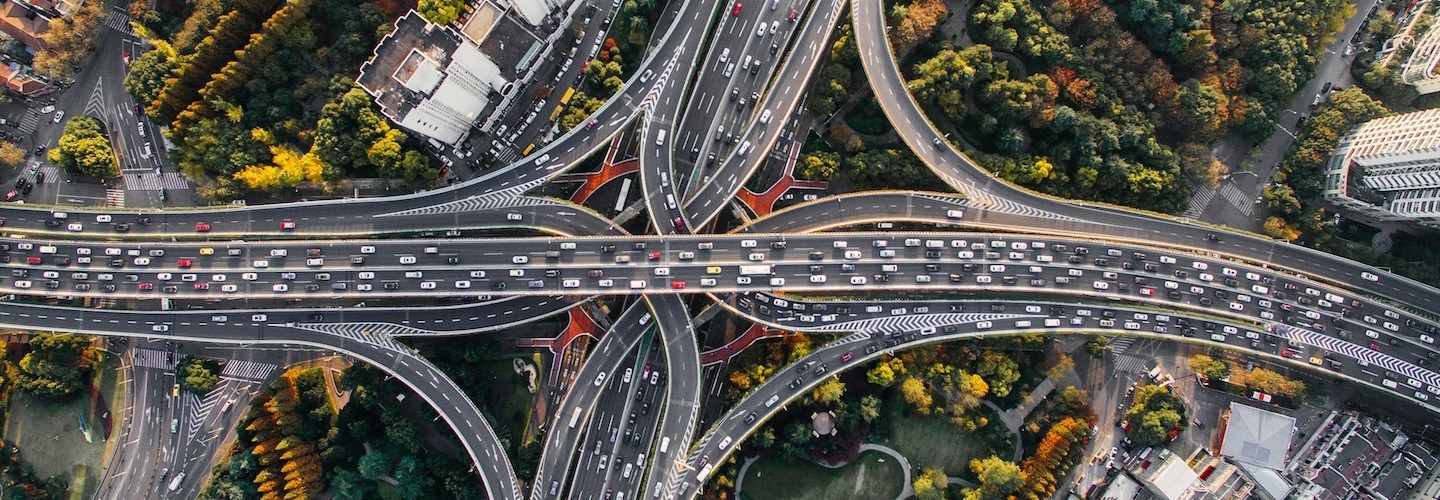
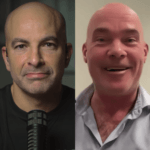
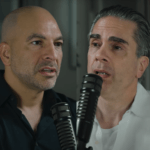
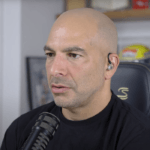
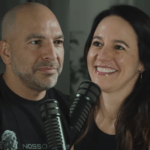
Hi,
Here in the UK there is a campaign to use “collisions” not “accidents”. Accidents feels like a marketing term that neatly implies no deliberate decisions. Speed, drink, drugs and most other causes of collisions are he foreseeable results of deliberate decisions. Collisions is more realistic, accurate and leaves out any assessment of decisions and choices.
where to find a driving school to learn these high end driving skills? I suppose there are a bunch of race car driving schools. But how to evaluate them if my goal is to learn safe driving and handling unexpected situations?
The nonprofit String Towns has launched the Crash Analysis Studio that I think Peter and those interested in the topic would appreciate.
https://www.strongtowns.org/crash-studio
Also, I was pretty shocked during this episode that Peter isn’t more suspicious of dangerous road design as a cause, even as he sites a “Bermuda Triangle” close to him where fatal accidents occur with frequency. While human error is undoubtedly a *proximate* cause in 96% of cases, I can’t believe Peter didn’t think to ask “is there a way we could improve road designs such that these human errors are much less likely to lead to deaths?” iIf you look at the American death stats vs many other countries it becomes quite clear that human error isn’t the only or even dominant cause. Alcohol, drug, and technology use are a similar problem in places with dramatically less auto-involved deaths
Excellent discussion that has the potential to save lives.Thank you both.Peter,about teaching your daughter to drive,may I suggest rather than emphasising the fear you have of her being the victim of driver carelessness,which is of course every parents fear,what my Dad taught me was along the lines of …we all,due to human nature loose concentration,become preoccupied occasionally (worried about a sick relative/job worries, so to make allowances for every other driver on the road who for a split second,has their eye off the ball,for that reason alone,have your head on a swivel as often as possible.Another thought that crossed my mind when I was under huge time pressure to get somewhere on time was…”How many times would getting to my destination on time compensate me for injuring someone or causing a serious accident?”And finally…car mats…make sure the one under the control pedals is immovable.By which I mean has NO chance of slipping and getting stuck under the brake or especially,the accellerator pedal.Hope this makes some sense.Thank you Peter Attia for this and many enlightening , informative talks. I hope you enjoy many drives/trips with your daughter as Designated Driver in the years ahead.
After listening to the podcast on Auto crashes… I was struck by Peter’s comment about how many lives are affected when someone is killed in a car accident… Most especially the driver of the car who caused the death. I recently watched the movie, “A Good Person”… written, and directed by Zach Braff-on Prime Video- Which deals exactly with the ramifications Peter was questioning… the movie, addresses grief… Addiction… Forgiveness… and was extremely disturbing to watch… but compelling and hopeful at the same time. I truly hope Peter can watch it, because it addresses so many of the heartaches our nation is facing at this time. Thank you, Dr. Peter Attia for all of the fine work that you do…and for how much you have taught me and everyone who listens to your podcast.
I am engrossed by the lack of attention hat occurs while driving and having a phone conversation. That being said how do jet fighter pilots, during combat, who have maps and radars and constant communication, mange to maintain their focus ?
Best episode of this podcast so far.
Two concerns of mine are window tinting and headlights. Dark tinted windows can obscure driver vision as well as make it nearly impossible for other drivers and pedestrians to see your eyes, where they are looking, and to confirm they can see you. This is of huge concern to me as a cyclist. NHTSA has also not passed regulations to require Adaptive Driving Beam technology, making our modern LED headlights blinding at night when compared to older halogen technologies and a decade behind Europe.
Combine this with the lack of vehicle safety inspections in many states where headlamp aim and improper window tinting would be monitored and remedied, and it is no wonder that nighttime driving proves infinitely more challenging than daytime and that driver-driver and driver-pedratrian communication suffer.
It was surprising to hear that there was not more reflections (from the safety community) about how we prepare kids to be safe drivers. Compared to most other high-income countries, we have younger drivers (16 vs typically 18). Also, as an immigrant getting my first license in another country, it was a bit shocking to experience the low level requirements for the written and road test here in the US. In sum, it is easier to get your license in the US and you can get it at a younger age compared to most other similar countries. Some advantages with this, sure, but certainly it also comes with a cost of more crashes (as seen clearly in statistics).
I was very frustrated in listening to this podcast. I feel like Peter needs to have other guests on that touch on the real root cause of traffic deaths. Namely: why are we building our cities around cars in the first place? I am someone who has taken the “orange pill” and realized my country (the United States) went all in cars when we should have invested in high speed rail, (for certain trips like LA to Vegas, LA to SF, NY to DC, etc), local rail networks, and bike networks for more frequent trips (e.g. work and grocery store trips). This is a massive issue that touches on so many aspects of life which include how we build our cities (zoning codes, parking minimums, bike infrastructure), to how the building of certain types of vehicles are encouraged (CAFE regulations). It’s not just a safety issue, but also a sustainability concern. The communities most of us live in are not sustainable and we would be smart to change the way we think about this. If anyone is going to read this, I recommend Peter speak with Jason Slaughter of Not Just Bikes and/or Ray Delahanty of City Nerd and/or Charles Marohn of Strong Towns.